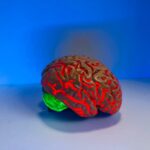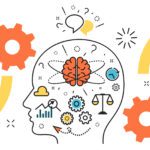By: Bob Glicksman | Posted: November 15, 2014 | Updated: April 5, 2023
Short term memory loss seen up close is sobering
Dementia is a common problem in the elderly population. As modern medicine becomes more capable of keeping the human body functioning, we are increasingly living long enough for our minds to degrade.
Dementia in the elderly comes in many forms. One common form is “short term memory loss”, which is manifested by the inability of a person to remember something that they just learned. Such people have otherwise normal cognitive skills and their long term memory may be unimpaired.
My mother has severe short term memory loss. As her caregiver, I have found that her short term memory impairment has many adverse consequences. One significant consequence is her loss of “temporal cognition”; loss of “grounding” her normal daily activities in time. Her inability to remember the day’s events causes her a great deal of confusion. I am convinced that this confusion results in a significant reduction in her quality of life. She lives each day with a substantial amount of anxiety over not knowing where she “is supposed to be” at every time of the day. Her anxiety becomes severe whenever the day includes any activity that is not routine; not something done every day, such as a club meeting, doctor’s appointment, weekly phone call with the family, etc.
Making my own future memory loss less debilitating
My experience with my mother has made me concerned about how I could avoid the horrors that come with short term memory loss when it inevitably hits me in the future. While I cannot prevent short term memory loss, I do believe that I can mitigate the confusion and anxiety that comes with not being able to mentally track my daily activities. My solution is a simple technological memory prosthesis – a “wearable” calendar.
Hypothesis: technology in the form of calendaring can help.
Unlike my mother, I am used to having technology on my person at all times. Currently, this in the form of a smart phone. In the future it might be a smart watch, “heads up display” on my eyeglasses, or other form of wearable technology not yet conceived. My smart phone has a calendar app and my idea is to list all of my daily activities on the calendar and to train myself (now, when I do not yet suffer from memory impairment) to consult the calendar constantly during the day. I believe that this simple aid will compensate for future short term memory loss over the activities of the day and will thereby avoid the anxiety that my mother experiences and improve my overall quality of life. I believe that if I work on making a habit of my constantly consulting my wearable calendar now, the habit will become engrained in my long term memory which, as in my mother’s case, is likely to remain intact.
Implementing intensive self-calendaring
I have chosen the Google Calendar on which to record my daily activities. This choice was largely driven by the fact that (a) I have an Android smart phone with the Google Calendar app already installed on it and (b) I have used the Google Calendar on my desktop computer for many years to record my work related events (meetings, tasks, etc.). However, the short term memory loss “prosthesis” idea can be implemented on most any calendar that is supported on a mobile device; e.g. Apple’s calendar on the iPhone.
The Google Calendar app on my smart phone allows me to create tasks as well as to view them. However, I prefer to input my calendar data on a desktop computer, as it is easier to type and edit there. The Google Calendar is stored “in the cloud”, so I can edit and view it from the Google Chrome browser on my desktop computer and the contents automatically sync with the Google Calendar app on my smart phone. The accompanying image shows a contrived set of daily events that a senior citizen might have entered into their calendar.
Note the importance of having all of the day’s activities listed on the calendar, even time reserved for meals at home. It is my belief that capturing a complete set of activities on the calendar will avoid any future confusion about what I am supposed to be doing and where I am supposed to be doing it, at all times of the day. Although I have entered these tasks on my desktop computer, they are stored “in the cloud” and automatically synched with my smart phone.
As long as I have made a habit of consulting the smart phone calendar app all day long, I should never experience confusion and anxiety over my schedule of activities, nor should I be concerned about missing something important.
Testing & Learning. Results thus far
At the present time, I am focused on recording all of my daily activities on my Google Calendar and on making it a habit to look at the calendar app on my smart phone constantly throughout the day. This turns out to be more difficult than I thought that it would be! I am finding it hard to break a lifetime habit of just looking at the calendar once (say in the morning) and committing the activities to memory from there. However, I do believe that if I persist to force myself to do this, I will eventually make this a new habit and that this new habit will not be impaired by future short term memory loss. I plan to continue to force myself to look at the calendar on my smart phone at least every time that I have the phone out of my pocket. I make and receive many calls and texts throughout the day and if I always consult the calendar at those times, I should have no difficulty in using it as a memory aide.
Extrapolating this idea into the future.
I plan to purchase a smart watch in the next year or two. There are many such devices coming onto the market and they advertise many attractive features. One requirement that I will have for any such purchase is support for display of my Google Calendar. In this way, I hope to be able to consult my watch for my list of activities, which I think will be even more convenient than my looking at the app on my smart phone. Further into the future, I may be able to arrange for my daily activities to be projected onto the inside of my eyeglasses. I wouldn’t have to do anything to view this information. The information would simply be projected into some part of my field of view and I could observe it at any time simply by looking in the right direction.
I think that there are great possibilities in using technology to assist us through the trials and tribulations associated with the aging process. I am excited by the notion that much of the technology needed already exists. It is just a matter of adapting the technology to the particular need. Very soon, we will be able to purchase wearable technology that includes physiological monitoring capability. Although the market for this technology is assumed to be young people monitoring their exercise regimen, I believe that this technology can be easily adapted to monitoring aging related diseases such as heart attack, stroke, falling, etc.
We live in exciting times where technology is rapidly advancing to the point where we can use it to materially extend the quality of life, even as advances in medicine are extending our longevity (heretofore, often at the expense of quality of life). There need not be a tradeoff here. We can live longer while maintaining a high quality of life through technology. Exciting times, indeed!
*Disclosure: The research and opinions in this article are those of the author, and may or may not reflect the official views of Tech-enhanced Life.
If you use the links on this website when you buy products we write about, we may earn commissions from qualifying purchases as an Amazon Associate or other affiliate program participant. This does not affect the price you pay. We use the (modest) income to help fund our research.
In some cases, when we evaluate products and services, we ask the vendor to loan us the products we review (so we don’t need to buy them). Beyond the above, Tech-enhanced Life has no financial interest in any products or services discussed here, and this article is not sponsored by the vendor or any third party. See How we Fund our Work.


